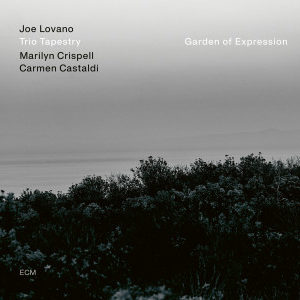What do these two albums have in common (one released in January 2019, the other will come out on Oct. 14)? That question I asked myself when listening to them one after the other lately, on a long and winding thursday afternoon. There probably was no other radio show in the last three decades that had works of ECM and Eno on such high rotation than my version of „Klanghorizonte“. So what is it that made me put a focus on these two „areas“ apart from taste and being faithful to a beloved habit – comparable to old brave hippies who never checked out of Hotel California. It‘s all horizons, that maybe one possible answer in three words. „It‘s all horizons“, Eno sings in one of the new songs, and „Horizons Touched“ is the title of a book on the history and aesthetics of ECM Records and „Magus“ Manfred Eicher. Both hold one another in high estimation, but never met in person. By the time Jon Hassell‘s „Power Spot“ (produced by Eno and Lanois, and surprisingly released on ECM), they exchanged faxes, probably kind words, and that was it.
Speaking horizons, look at the covers. Though coming from two very different musical languages, „Trio Tapestry“ and „Foreverandevernomore“ share a special handling of space and breath. Both have moments of (discreet) eruption and a stunning care for details. In the words of Joe Lovano (liner notes): „Themes and compositions that are peaceful and spiritual in nature to fuel our ideas and create music within the music. A spirit lake, an unpredictable smiling dog, the rare beauty of expression (…)“. In the words of Leah Kardos (Wire, Nov. 2022): „These are songs with enveloping atmospheres that dramatise their lyrics with crisping, gasping, blinding, thundering, quietly screaming sound design.“
Both long-players are incredibly well sequenced by Manfred Eicher and Brian Eno. Joe Lovano told me (funny enough, in Bonn, a town that literally appears in „Sherry“) how deeply impressed he had been when finally listening to the vinyl. The lines of suspense, the track-by-track order, their impact! The same with Brian’s record. The instrumental „Inclusion“ is silently blowing you away (at the end of the first side), and „Making Gardens Out Of Silence“ is the best choice for the final cut.
There is no replacement for listening – old school – from start to end. Not forgetting all things lost in the fire of our lives (as far as we can remember). Sometimes, from a distance, everything (losses first, and hands still to hold) falls into place. No catchy songs, no singalongs, no fairytale searches of parallel worlds, no hooks, no future evergreens, oh, hold on, in their own peculiar way these songs which could be coined as modern day lamentations, a collection of future „everblues“ at least, striking quite a special, different note, corner in Brian Eno‘s song life. The album is haunting, uncanny, ethereal, strangely elevating, anti-nostalgic. „Always there / For the last hooray / Last light of an old sun.“
Then again (change of scene), the follow-up of „Trio Tapestry“, „Garden Of Expression“, lives up to the high standard of the first meeting in New York. (Let’s go sideways for a while.) Now with a deeper touch of Provence pastel and colours at dusk. You can think of every jazz writing cliche of praise, from „filigree“ to „elemental“, and be sure that Lovano, Crispell and Castaldi are breathing new life into it. After the first three pieces of pure baladry (written by soul, not by the book), the appearances of sound take more and more adventurous side steps, from moments of pianistic unrest and upheaval, to an exploration of metal and sound in Castaldi‘s drum figures. A zen-like purity‘s bold pairing with an adventurous spirit. The record delivers everything with grace, selflessness and the most nuanced sense of tempo, time standing still and a flow of undercurrents. If this sounds slightly over the top, let the music take over, dim the lights and follow the tapestries!
And, in regards to Eno, the instruction manual for „Foreverandevernomore“ is closing in with the same simple sentences: „The record delivers everything with grace, selflessness and the most nuanced sense of tempo, time standing still and a flow of undercurrents. If this sounds slightly over the top, let the music take over, dim the lights and follow the tapestries!“


